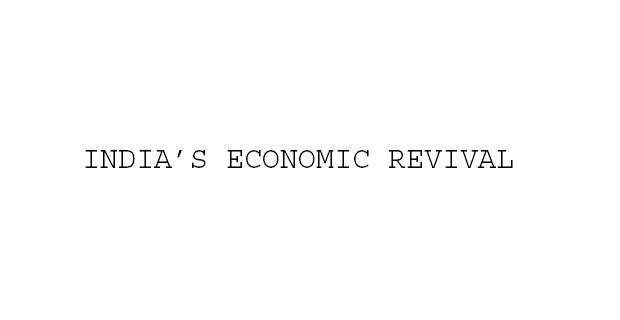INDIA’S ECONOMIC REVIVAL—AN OUTLOOK
After witnessing a quarterly slowdown during first ...
After witnessing a quarterly slowdown during first quarter of financial year 18-19, India has witnessed another quarterly GDP growth slowdown fairly quickly, according to research done by financial experts. These experts expect fourth quarter of FY 20 GDP growth to decelerate to 6.3% from 6.6% in the third quarter of FY 19. There would be another four-quarter GDP slowdown, starting from 4 FY 19. Thus, market expects FY 19 GDP growth to be 6.9% as against the FY 19 advance estimate of 7.0% (FY 18-19: 7.2%). Clearly, FY 20 will be the second consecutive year of an economic slowdown in India. Asserting the slowdown and reviving the economy will be the first challenge for this government. Policy prescription will require a granular analysis of the ills plaguing the economy. As per opinion, government will have to devise and execute both short-term and medium-to-long-term measures to arrest the slowdown. While cyclical challenges can be addressed through short-term measures, the need of the hour is to address the structural challenges plaguing the Indian economy. At the macro level, the revival of investment (At 1st quarter FY 19: 3.9% and at 1st quarter of FY 18 was 15.0%), the resolution of the credit freeze witnessed by the non-banking financial sector and the worsening of the global trade environment (export growth: at 1st quarter of FY 18: 4.9% and at 1st quarter of FY 17 was 3.6%) are the key challenges.
Although little can be done with regard to the global trade environment, certainly a more proactive policy intervention than hitherto followed could be pursued to aggressively revive investment. Opinion shows, such intervention should be the top priority of the new central government. A step-up in government capes is indeed needed; however, it may be insufficient to provide a fillip to the sagging growth because general government capes accounts for only 12.0% of the investment in the economy. Several high-frequency indicators—automobile sales, rail freight, petroleum product consumption, domestic air traffic and imports (non-oil, non-gold, non-silver, and non-precious and semi-precious stones)—indicate a slowdown in consumption, especially private consumption despite low inflation in the economy. The consumer price index inflation declined to 2.46% in 4th quarter FY 19 from the average 9.67% for 1st quarter of FY 13-14th quarter in FY 14. No doubt a sustained low inflation aids an economy in many ways, but it has a flip side too.











Comments.